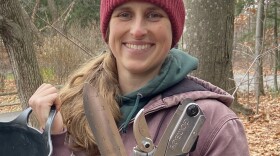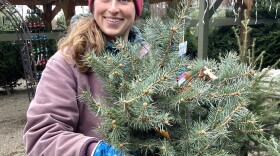Emma Erler, lead horticulturist at Kirkwood Gardens at Squam Lakes Natural Science Center and host of Homegrown NH, says she’s asked fairly often if a branch can be saved once it’s broken off a favorite shrub.
She says it’s generally not worth the effort.
“Trying to cable or tie branches back to the main trunk is usually wasted energy,” she says. Unlike people, woody plants are unable to heal damaged tissues. Instead, they compartmentalize wounds with layers of cells that prevent the damage from spreading any further.
Therefore, the damaged wood does not grow back together again. It will never be possible to remove the ties or cables that hold a broken branch in place, which could mean a permanent eyesore in the landscape, if the branch is still attached to the plant.

Instead, Erler takes the attitude that pruning out broken branches helps trees and shrubs in the long run. Remaining branches will often grow more vigorously, and careful pruning will often allow you to fill in the blank area.
She says large branches cannot be rooted in their entirety, but a few small twig cuttings may be salvageable.
“But starting plants from cuttings can be tricky,” she says. “Very few species will root from cuttings that are stuck directly into the ground. It is almost always necessary to pot them up and use rooting hormones and some type of propagation chamber to keep humidity high.”
So when a branch breaks, she says, it is almost always best to remove it and enjoy the challenge of pruning the shrub or tree into a pleasing shape.
See you in the garden!
Homegrown NH is a collaboration between Squam Lakes Natural Science Center and NHPR.










